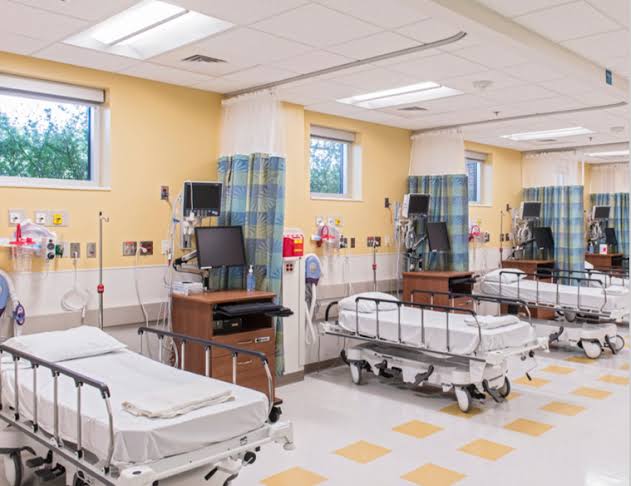How Quality Healthcare Lighting Enhances Patient and Staff Well-Being
In healthcare settings, lighting plays a vital role in supporting patient recovery, staff performance, and overall operational efficiency. Unlike traditional lighting needs, healthcare lighting must be carefully designed to address the unique requirements of hospitals, clinics, and other medical facilities. From enhancing patient comfort to improving the precision of medical tasks, effective healthcare lighting can make a significant difference in both outcomes and satisfaction.
In this blog, we’ll explore why healthcare lighting matters, the specific benefits it provides, and some key considerations for designing and implementing the best lighting solutions in healthcare environments.
Why Lighting Matters in Healthcare
The right lighting in healthcare settings does much more than illuminate a space. It influences mood, alertness, visual acuity, and even biological functions. Healthcare facilities are dynamic spaces where different areas require different lighting approaches to support their specific purposes. For example, operating rooms demand intense, focused lighting, while patient rooms benefit from softer, adaptable lighting to create a relaxing atmosphere.
Research has shown that lighting can impact sleep patterns, stress levels, and recovery times, making it a crucial factor in patient care. It also affects healthcare professionals, helping them stay alert and make precise assessments, which is essential in high-stakes environments.
Benefits of Quality Healthcare Lighting
- Improved Patient Comfort and Recovery:
Lighting directly influences patient well-being and recovery. Exposure to natural light, or lighting that mimics daylight, can help regulate patients’ circadian rhythms, promoting better sleep and faster healing. In settings like patient rooms, softer lighting that reduces glare can provide a sense of calm and reduce anxiety. Studies have shown that patients in well-lit rooms experience lower stress levels, contributing to a more positive recovery experience. - Enhanced Staff Performance and Safety:
Healthcare staff work long hours, often performing intricate tasks that require high levels of concentration. Proper lighting helps reduce eye strain and fatigue, allowing staff to work comfortably and safely. In areas where precision is paramount, like operating rooms, high-intensity, shadow-free lighting ensures accuracy and supports better decision-making. Quality lighting helps staff stay alert, leading to fewer errors and improved patient outcomes. - Reduction of Medical Errors:
Lighting quality is essential in areas where accurate diagnosis and treatment depend on clear visibility, such as examination rooms and laboratories. Insufficient lighting can lead to mistakes in reading vital signs, administering medication, or interpreting test results. Bright, uniform lighting helps minimize shadows and enhances color accuracy, ensuring that medical staff can make the right assessments without visual impediments. - Energy Efficiency and Cost Savings:
Healthcare facilities operate around the clock, which can lead to high energy consumption. Investing in energy-efficient LED lighting systems can help reduce operational costs while providing quality illumination. LEDs have a long lifespan, reducing the need for frequent replacements and minimizing maintenance disruptions in critical areas. Additionally, motion-sensor lighting and dimmable controls help save energy in low-traffic areas, such as storage rooms and corridors. - Infection Control and Hygiene:
Specialized healthcare lighting can also play a role in infection control. Some lighting systems now include features like antimicrobial coatings on fixtures, which reduce the spread of bacteria in high-touch areas. Furthermore, ultraviolet (UV) lighting can be used as a disinfection tool, helping to sterilize operating rooms, patient rooms, and other critical environments between uses. This additional layer of protection contributes to a safer environment for both patients and staff.
Key Considerations for Effective Healthcare Lighting
Achieving the best lighting setup in healthcare facilities requires a thoughtful approach that considers various factors, from the types of procedures performed to the physical layout of the space. Here are some key considerations:
- Adaptability and Control:
Healthcare lighting systems should offer flexibility to accommodate the diverse needs of a facility. In patient rooms, adjustable lighting that allows dimming and different color temperatures helps create a comfortable atmosphere, enabling patients to relax or sleep as needed. In treatment rooms, the ability to switch between different light intensities and color temperatures allows staff to adapt lighting for specific tasks, like wound care or examination. - Color Rendering Index (CRI):
In healthcare, accurate color perception is essential. The Color Rendering Index (CRI) measures how well a light source displays colors compared to natural light. A high CRI (close to 100) ensures accurate color differentiation, which is crucial in environments where recognizing subtle color changes in skin tone, wounds, or bodily fluids can indicate a patient’s condition. High-CRI lighting supports better diagnostics and is especially important in areas like dermatology clinics, surgical rooms, and pathology labs. - Daylight Integration:
Natural light has numerous benefits, particularly in spaces where patients spend extended periods. Whenever possible, healthcare facilities should incorporate natural light through windows or skylights, as it supports circadian rhythms and improves mood. Where natural light isn’t feasible, artificial lighting that mimics the color temperature of daylight (around 5000K) can provide similar benefits, helping to regulate sleep patterns and reduce stress. - Glare Reduction and Uniformity:
Glare can be uncomfortable for patients and distracting for staff. Lighting design should aim to minimize glare by using diffusers, indirect lighting, and fixtures with glare control features. Uniform lighting is also essential to avoid shadows that can create confusion or misinterpretation, particularly in critical areas like operating rooms or imaging facilities. - Emergency and Wayfinding Lighting:
Healthcare facilities must be prepared for emergency situations, where clear lighting is essential for safe evacuation and navigation. Emergency lighting with battery backup should be strategically placed to illuminate exit paths and critical areas during power outages. Additionally, wayfinding lighting, such as floor lighting or wall-mounted fixtures in hallways, assists both staff and patients in moving through the facility comfortably and confidently. - Sustainable Design and Green Building Compliance:
Many healthcare facilities are moving toward sustainable design to minimize their environmental footprint. Energy-efficient lighting, occupancy sensors, and daylight-responsive dimming systems are all examples of sustainable lighting practices. Choosing eco-friendly lighting systems not only reduces energy consumption but can also help facilities qualify for green building certifications like LEED (Leadership in Energy and Environmental Design), which can be beneficial for public relations and operational costs.
Conclusion
Lighting in healthcare settings is far more than a practical necessity; it’s an integral part of patient care, staff efficiency, and facility management. Well-designed healthcare lighting can enhance patient comfort, support staff performance, and help control operational costs, all while maintaining a clean and safe environment. By carefully considering factors like adaptability, color accuracy, glare reduction, and energy efficiency, healthcare facilities can create a lighting system that meets the needs of both patients and staff.
Investing in quality healthcare lighting is an investment in better outcomes, increased satisfaction, and a healthier environment for everyone. As technology continues to advance, healthcare facilities in Cambridge and beyond have access to innovative lighting solutions that not only illuminate but elevate the quality of care provided.






